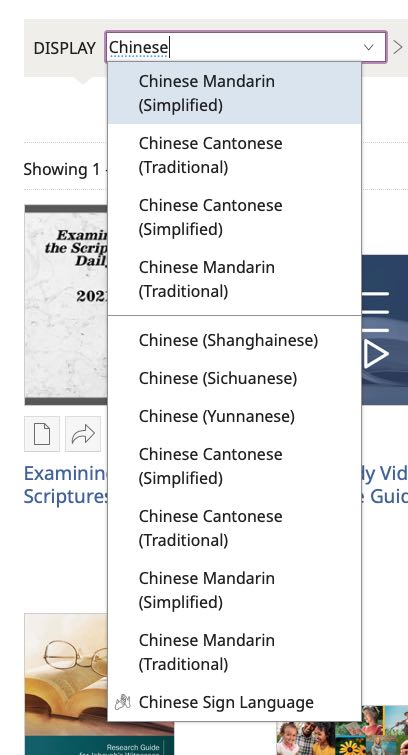rénxīn (rén·xīn people’s · hearts → [popular/public feeling] 人心)‐huánghuáng (huáng·huáng {being afraid; fearful; scared; frightened [→ [being anxious; uneasy; nervous]]} · {being afraid; fearful; scared; frightened [→ [being anxious; uneasy; nervous]]} 惶惶) ← Tap/click to show/hide the “flashcard”
[Notes: Tap/click on a Pīnyīn (Pīn·yīn {Piecing Together of} · Sounds → [Pinyin] 拼音) expression to reveal its “flashcard”; tap/click on a “flashcard” or its Pīnyīn (Pīn·yīn {Piecing Together of} · Sounds → [Pinyin] 拼音) expression to hide the “flashcard”. 📖 📄 📘 icons mean 📖 Reveal All, 📄 Reveal Advanced, and 📘 Reveal None re all the “flashcards” in the heading, paragraph, etc. that they are placed at the beginning of.]
As 2023 draws to a close, jw.org is featuring the article “2023: A Year of Anxiety—What Does the Bible Say?”. This week’s MEotW, “rénxīn (rén·xīn people’s · hearts → [popular/public feeling] 人心)‐huánghuáng (huáng·huáng {being afraid; fearful; scared; frightened [→ [being anxious; uneasy; nervous]]} · {being afraid; fearful; scared; frightened [→ [being anxious; uneasy; nervous]]} 惶惶)”, is used in the title of the Mandarin version of this article:
English:
2023: A Year of Anxiety—What Does the Bible Say?
Mandarin:
📖 📄 📘 2023 Rénxīn (Rén·xīn People’s · Hearts → [Popular/Public Feeling] 人心)‐Huánghuáng (Huáng·huáng {Being Fearful → [Being Anxious]} · {Being Fearful → [Being Anxious]} 惶惶) de (’ 的) Yì (One 一) Nián (Year 年 年/秊): Shìjiè (Shì·jiè {Generation → [World]} · Extent’s → [World’s] 世界) Dàshì (Dà·shì {Big → [Major]} · Events 大事) Zěnyàng (Zěn·yàng (in) What · {Forms → [Ways]} → [How] 怎样 怎樣) Yìngyàn (Yìng·yàn {Respond to} · Verifying (Regarding) → [Fulfil] 应验 應驗) Shèngjīng (Shèng·jīng Holy · Scriptures → [Bible] 圣经 聖經) Yùyán (Yù·yán {In Advance} · Sayings → [Prophecies] 预言 預言)
Breakdown
“Rén (people | person[s] | human[s] | man/men 人)” can mean “people”, and “xīn (heart 心)” means “heart”. Together, they can literally mean “people’s hearts”, and in the context of “rénxīn (rén·xīn people’s · hearts → [popular/public feeling] 人心)‐huánghuáng (huáng·huáng {being afraid; fearful; scared; frightened [→ [being anxious; uneasy; nervous]]} · {being afraid; fearful; scared; frightened [→ [being anxious; uneasy; nervous]]} 惶惶),” they effectively mean “popular/public feeling”.
“Huáng ({[is] afraid; fearful; scared; frightened} [→ [[is] anxious; uneasy; nervous]] 惶)” seems to basically literally mean “[is] afraid; fearful; scared; frightened”. In some cases, it can effectively mean “[is] anxious; uneasy; nervous”. (In these definitions, the presence of “[is]” means that this expression can sometimes function as a stative verb, i.e., a verb that describes a state of being, rather than an action. Some more information on stative verbs, quoted from the ABC Chinese-English Dictionary, can be found in the MEotW post on “gāowēn (gāo·wēn high · {being warm → [temperature]} 高温 高溫)”.)
Taken together, the morphemes in “rénxīn (rén·xīn people’s · hearts → [popular/public feeling] 人心)‐huánghuáng (huáng·huáng {being afraid; fearful; scared; frightened [→ [being anxious; uneasy; nervous]]} · {being afraid; fearful; scared; frightened [→ [being anxious; uneasy; nervous]]} 惶惶)”, as used in the above example, effectively mean “popular/public feeling being anxious”.
One More Time
In “rénxīn (rén·xīn people’s · hearts → [popular/public feeling] 人心)‐huánghuáng (huáng·huáng {being afraid; fearful; scared; frightened [→ [being anxious; uneasy; nervous]]} · {being afraid; fearful; scared; frightened [→ [being anxious; uneasy; nervous]]} 惶惶)”, “huáng ({[is] afraid; fearful; scared; frightened} [→ [[is] anxious; uneasy; nervous]] 惶)” is doubled, or repeated. In linguistics, this phenomenon is called reduplication, and it’s quite common in Mandarin. Sometimes, the tone of the duplicated morpheme is kept the same, while other times, the second occurrence’s tone becomes neutral. Off the top of my head, here are some other examples of reduplication in Mandarin:
- xiǎngxiang (xiǎng·xiang {think about} · {think about} | think · think 想想)
- chángcháng (cháng·cháng frequently · frequently | often · often | constantly · constantly 常常)
- mànmàn (màn·màn slowly · slowly [→ [gradually]] 慢慢)
- kànkan (kàn·kan {look at} · {look at} | look · look | see · see | watch · watch 看看)
Sometimes, one might even come across a Mandarin double double, such as “mǎma‐hūhū ((mǎ·ma horse · horse 马马 馬馬) (hū·hū tiger · tiger 虎虎) → [careless; casual | fair; so-so; just passable])”. (Hopefully, this term does not apply to our approach to learning Mandarin, especially if we are doing so for Jehovah’s work in the Mandarin field!)
Idiomatic
Considering its structure, we can say that “rénxīn (rén·xīn people’s · hearts → [popular/public feeling] 人心)‐huánghuáng (huáng·huáng {being afraid; fearful; scared; frightened [→ [being anxious; uneasy; nervous]]} · {being afraid; fearful; scared; frightened [→ [being anxious; uneasy; nervous]]} 惶惶)” is an idiom. However, it does not seem to be a chéngyǔ (chéng·yǔ {(sth. that) has become} · saying → [set phrase (typically of 4 characters); idiom] 成语 成語). This excerpt from the MEotW post on “chéngyǔ (chéng·yǔ {(sth. that) has become} · saying → [set phrase (typically of 4 characters); idiom] 成语 成語)” discusses the difference:
So, it appears that while chéngyǔ (chéng·yǔ {(things that) have become} · sayings → [set phrases (typically of 4 characters); idioms] 成语 成語) can be called idioms in English, not all Chinese idioms are chéngyǔ (chéng·yǔ {(things that) have become} · sayings → [set phrases (typically of 4 characters); idioms] 成语 成語). It seems that “chéngyǔ (chéng·yǔ {(things that) have become} · sayings → [set phrases (typically of 4 characters); idioms] 成语 成語)” specifically refers to Chinese idioms that originated in Classical Chinese, or Literary Chinese. This writing style has largely been replaced by written vernacular Chinese, which has been the standard style of writing for Modern Standard Mandarin for about a century now.
Since they originated in Classical Chinese, which hasn’t been current for about a century, chéngyǔ (chéng·yǔ {(things that) have become} · sayings → [set phrases (typically of 4 characters); idioms] 成语 成語) often cannot be fully understood by modern speakers and readers of Mandarin, since knowledge about the source material for chéngyǔ (chéng·yǔ {(things that) have become} · sayings → [set phrases (typically of 4 characters); idioms] 成语 成語) has naturally been fading with the passing of time.
